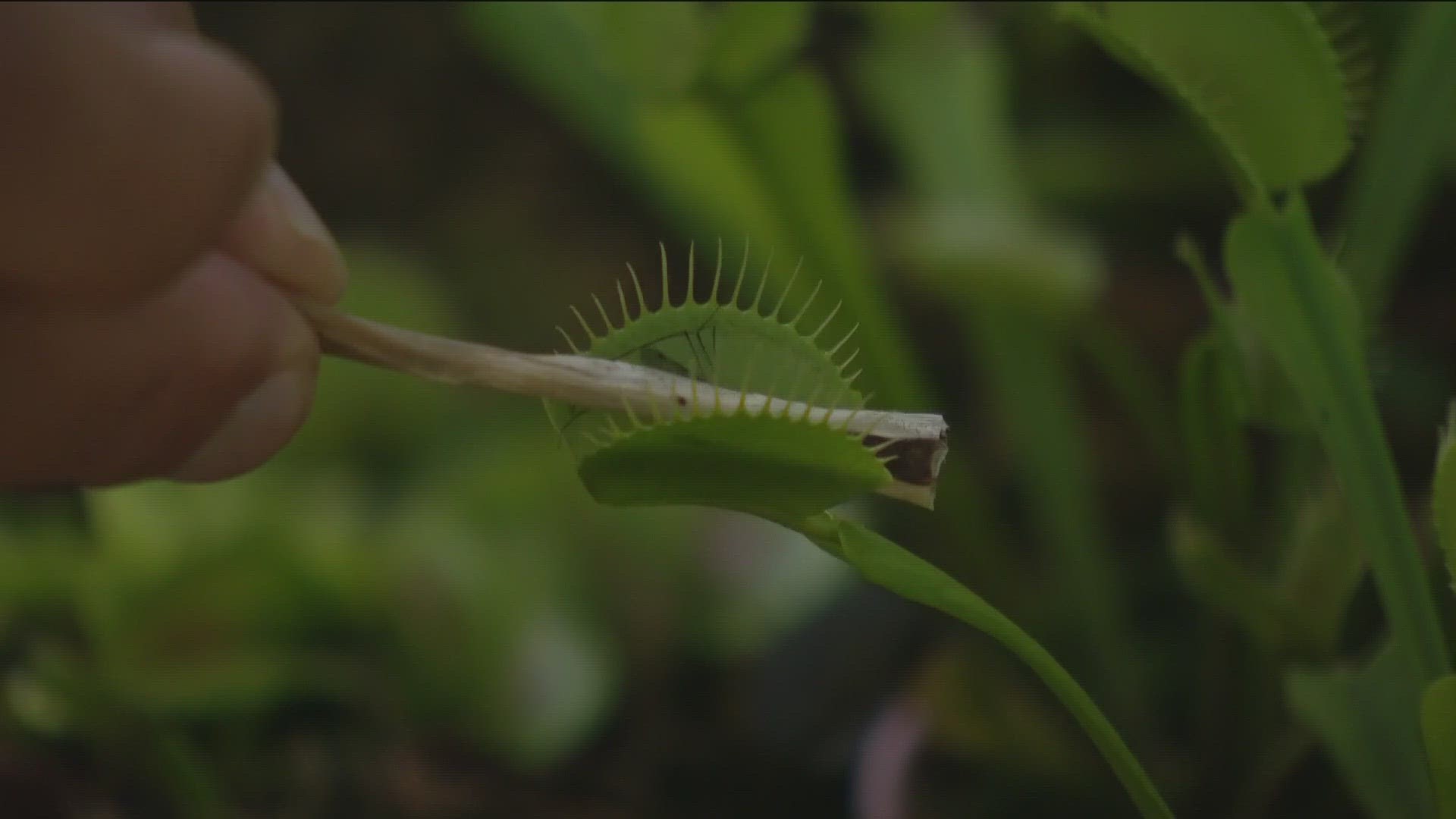ENCINITAS, Calif. — Head to the Botanic Garden in Encinitas this month and you’ll notice something different. In their Savage Gardens exhibit – a wetland has been crafted, showing you the intricate and sometimes bizarre world of carnivorous or ‘killer plants.’
“You will come in and you’ll see a massive insect trap -- the Nepenthes Pitcher plant -- that you can climb inside of and pretend like you’re an insect that's been stuck inside," said Brandi Eide, Senior Director of Facilities and Strategic Projects at San Diego Botanic Garden. "You can hear what it sounds like maybe if you are a fly trapped inside. You can walk through a wetland and look at where these plants would naturally occur. Right now, it’s a little bit spooky for Halloween, so there’s some fun that bats and skeletons and other things to explore in this place. We've got some large terrariums, some small terrariums that mimic with their habitat might look like, and some other larger sculptures to see what these plants would look like if you were the size of an insect.”
It's a delicate balance not only in nature to find these plants, but to bring the fun and science together, to show visitors how these plants work in nature.
“These displays we really try to do a mix of things," added Eide. "We want to attract people into the beauty and wonder of plants and the environment and also hopefully a takeaway of why these plants are important. What role do they serve? What’s some unique factor? Like, some of these pitcher plants can capture a rodent, for example. Just something that sticks with us because the things that we really relate to, and connect to, we care about. What we care about, we protect. So, for us, it’s really a mix of entertainment, the aesthetics and beauty, and kind of fun and excitement of it, but also leaving with some takeaways.”
The exhibit comes at a crucial time for wetlands, where these plants are found. The EPA estimates that of the 220 million acres of wetlands found in the continental U.S. hundreds of years ago, more than half have been drained and converted to other uses.
“When that habitat is lost, these plants can’t live anywhere else," Eide told CBS 8. "They have to have a wetland. So, they’re displaced, and that’s pretty much the end of the line for many of the species. Not only when one species becomes extinct. There are also secondary extinctions, which means if you lose one species, the other species dependent on it for food or for habitat, they are threatened, and also often become extinct. So, it just kind of sets off a chain of problems that can happen and have very wide-reaching impacts.”
You can visit the traveling showcase through October 29th and while you’re there enjoy the Fall Festival beginning October 12. The San Diego Botanic Garden is already gearing up for the winter holiday season too. You can purchase tickets for their annual Lightscape exhibit on their website as well. That begins on November 17 and runs through January 1.

